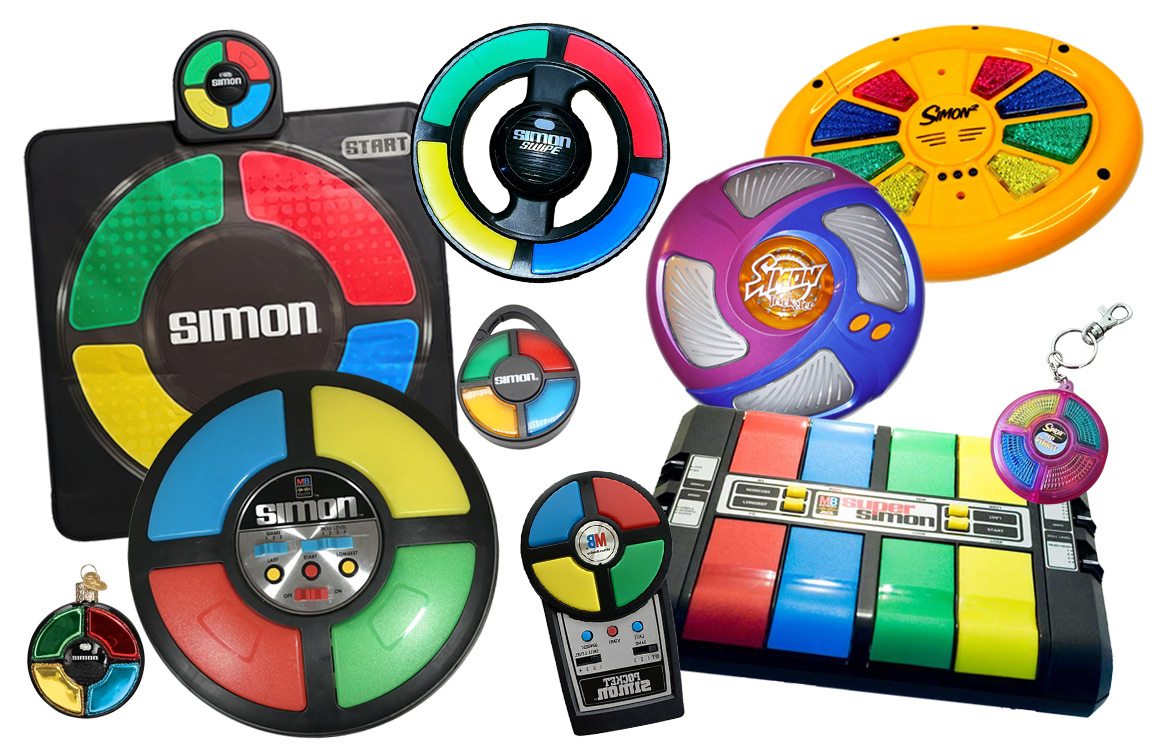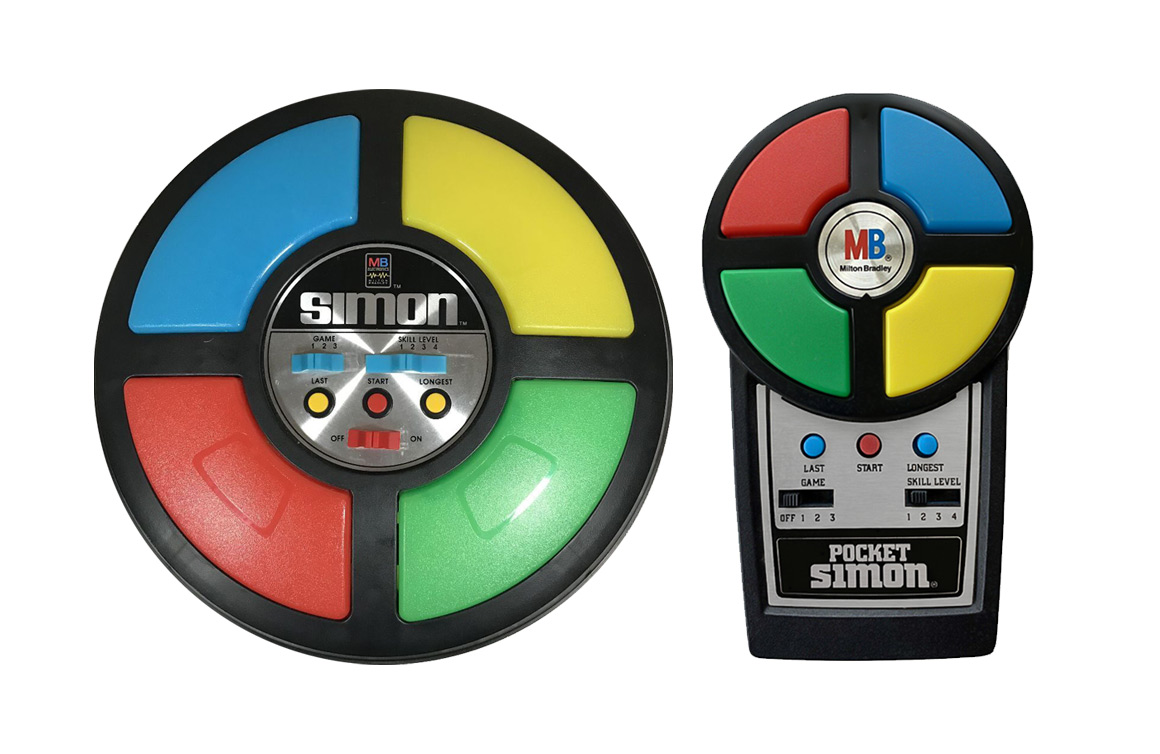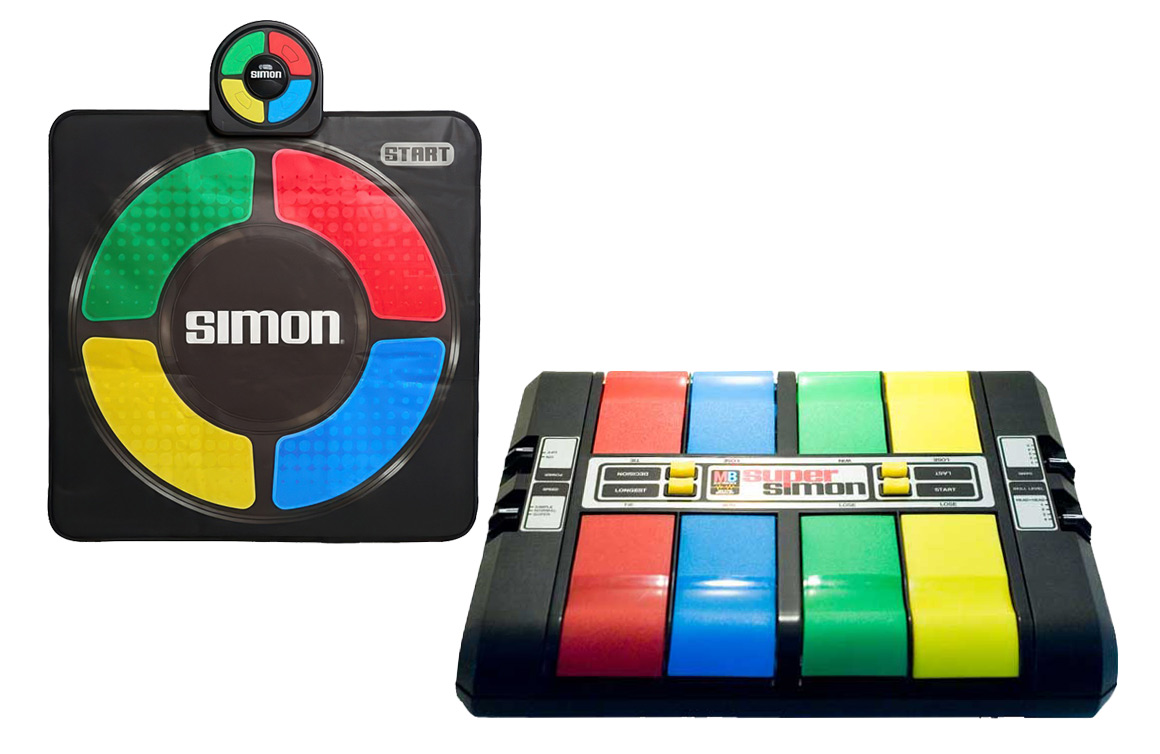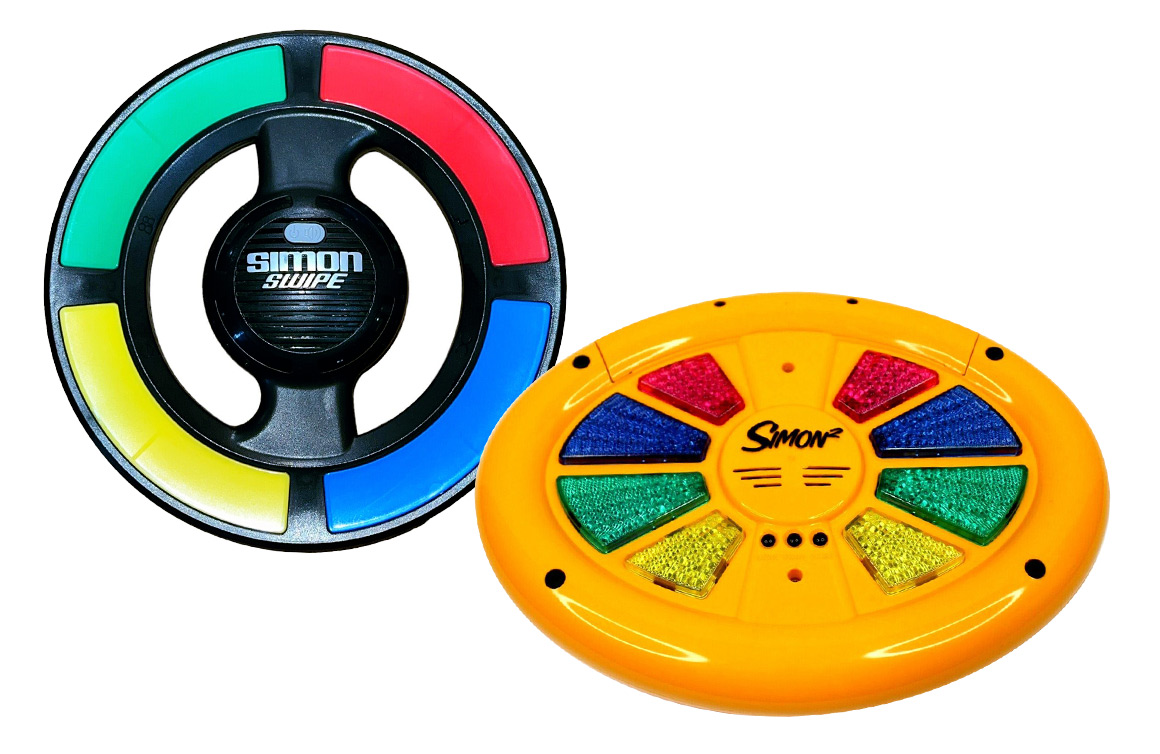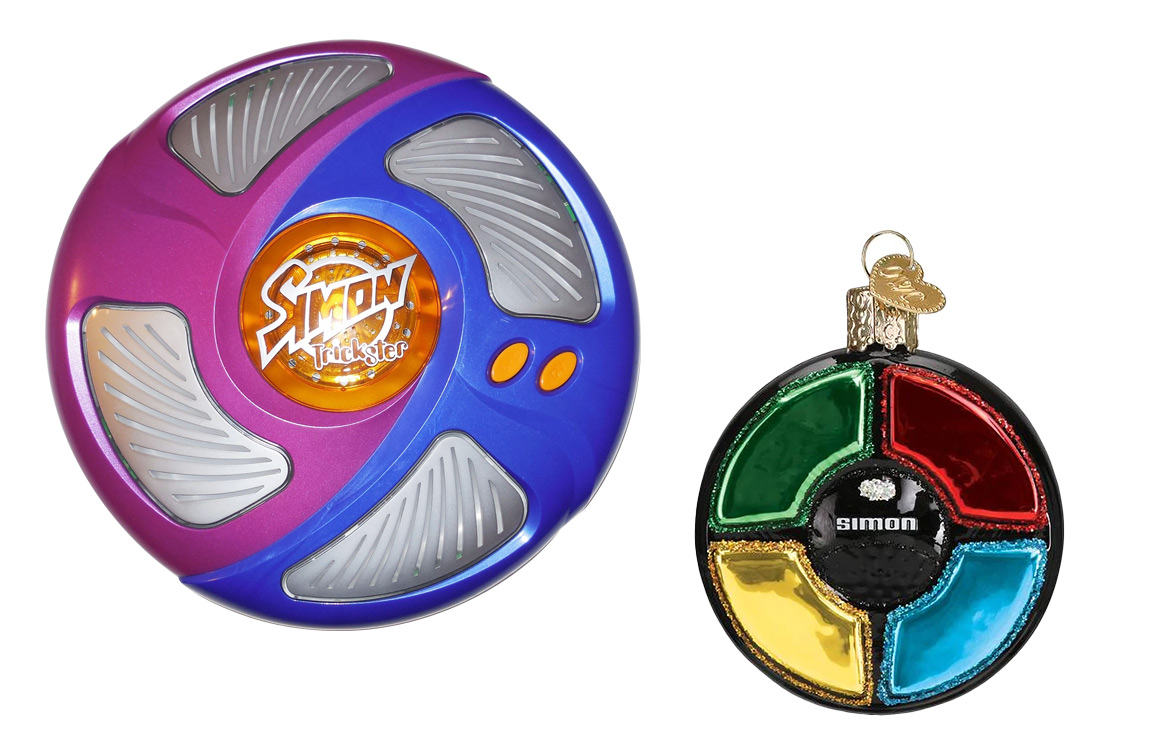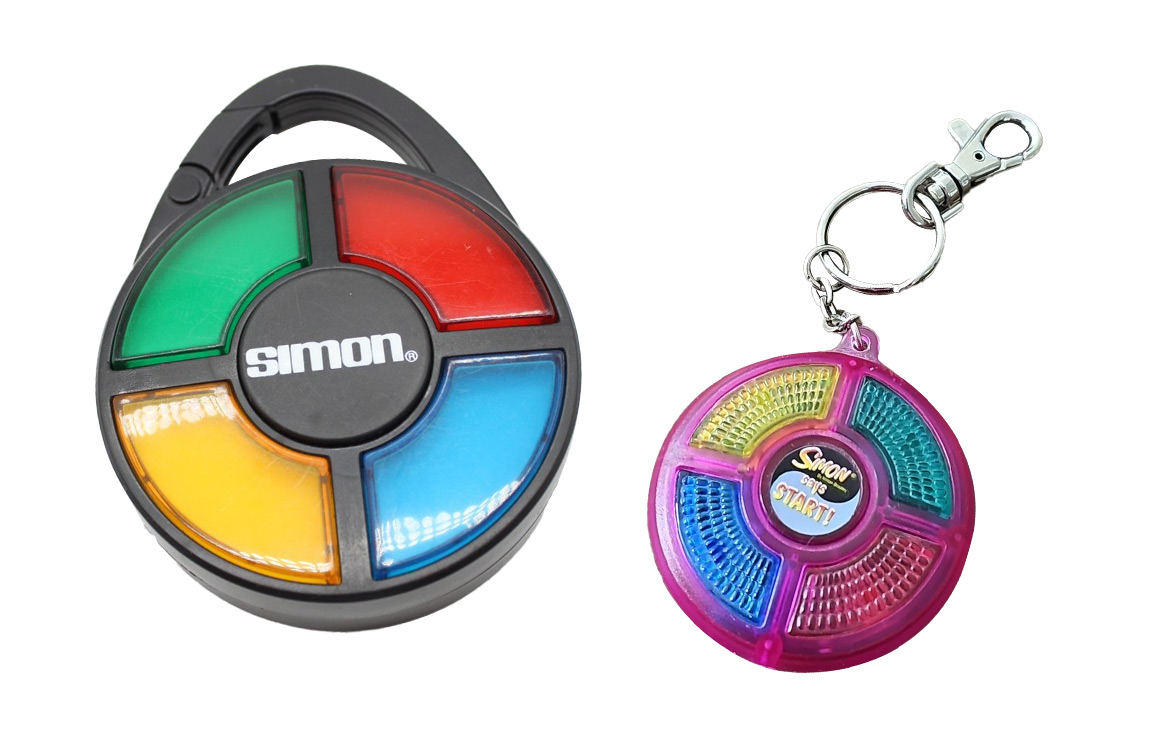Have you played with the classic 1980s game Simon, or one of its many adaptations?
Its origin story involves a renowned designer, a famous marketing firm, and a little bit of marketing intrigue. It began as a test of memory in which a player duplicates a sequence of colors and lights, increasing in difficulty the longer one plays.
A FLASH OF BRILLIANCE
As its name suggests, Simon is loosely based on the traditional kids’ game Simon Says. Released in 1978, it employs a simple computer to track the light and sound effects. The game was designed by Ralph Baer, Howard Morrison, and Lenny Cope, working at that time under contract to the famous– or perhaps infamous — toy engineering and marketing firm Marvin Glass & Associates (MGA).
Baer designed many memorable devices, and he is also remembered for leading a team that designed the first home video game console in 1972, the Magnavox Odyssey for American homes. Playing a different arcade game gave him the initial idea for a handheld device that became Simon.
Marvin Glass & Associates became infamous for a couple of reasons. First, the firm required potential toy buyers to sign a contract stating they would not copy a new toy before they were shown it. The company also recognized the value of good publicity and publicity stunts, such as bringing some new toys to New York’s International Toy Fair in an armoured truck.
To introduce Simon in 1978, the firm chose another venue: the infamous New York disco club, Studio 54. On May 15, 1978, the club’s mirrored disco ball was replaced with a giant Simon replica, complete with lights. Often populated by rock stars and celebrities, Studio 54 was known for its advanced lighting tricks (among other less relevant and less reputable activities). Undoubtedly, the oversized hanging Simon and plenty of sample games lent a playful mood to the evening.
VARIATIONS ON A THEME
Since its festive unveiling, Simon has inspired many different versions of the game and related material goods.
There are small Simon games, from a working Christmas tree ornament to Pocket Simon and the clip-on Carabiner Edition. Super Simon games with eight keys allowed two-opponent play on the same game, while advanced microprocessors allowed Simon Trickster and Simon II to offer much more complicated games. Hasbro introduced Simon Swipe in 2013, featuring a complete redesign of the game shaped something like a steering wheel. In addition, Simon has influenced the designs of myriad imitations by many major toy and computer game manufacturers.
Simon inspires jewelry such as earrings and necklaces, and a working Simon key chain. The latest spin-off is this year’s Simon Jump Game Mat, upon which a player’s feet jump to the required space that memory dictates — adding a new physicality to the classic rules. Simon doesn’t say “Jump!” or “Dance!” but that’s what players do. Like any classic plaything that endures the test of time, Simon will test our memory — and our reflexes — for years to come.

